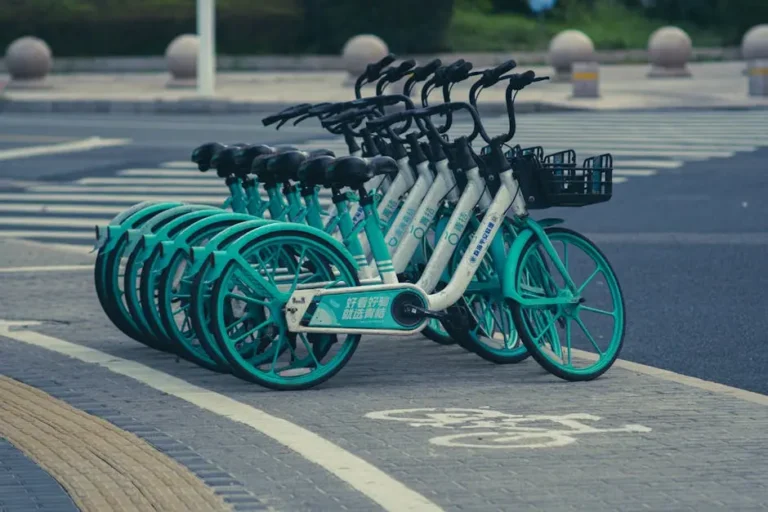9 Tips for Finding the Best Bike Rentals in Any City
Exploring a new city on two wheels is an exhilarating experience. Whether you’re a casual rider or a seasoned cyclist, finding the right bike rental can enhance your adventure. Here’s a guide to help you locate the best bike rentals, no matter where you roam.
1. Research Local Rental Shops
Start by researching reputable bike rental shops in the area. Look for online reviews, customer testimonials, and ratings to gauge their service quality. Places that frequently receive glowing feedback are often those that prioritize maintaining their bikes in tip-top shape and offer tailored suggestions to meet your cycling preferences. Sometimes, digging deeper into community forums or biking groups can yield insider info on the best shops around. For example, All Mountain Cyclery offers a unique local biking experience with changes in available equipment to cater to their client’s needs.
Don’t just rely on internet reviews; visiting a shop in person can provide significant insights as well. Observing firsthand the kind of bikes on offer, the friendliness of the staff, and the general ambiance of the shop can help define whether it’s the right choice for your biking adventure. You can often have engaging conversations, getting quick tips on local trails or paths which might not be well-documented online.
2. Consider the Types of Bikes Available
Different trips require different bikes. Whether you need a mountain bike, a road bike, or a comfortable cruiser, make sure the rental shop offers a range of options. If you’re planning a rigorous trek through varied terrains, a mountain bike could be ideal, while casual city explores might fare better on a cruiser. Visiting places like Copenhagen, with its famed cycling culture, you’ll find shops that provide options specifically suited for the city’s streets and lanes.
Traveling to exotic terrains such as Rome may call for specific bike types that endure the twists and turns of cobblestone paths. A versatile offering also speaks to the shop’s commitment to serving diverse customer needs, ensuring everyone’s adventure is uniquely catered for. Always inquire if they offer high-performance bikes for tourists wanting to experience thrilling rides in new landscapes.
3. Evaluate Rental Costs
Compare prices among different shops to ensure you’re getting a fair deal. Keep an eye out for hidden fees or additional charges. Occasionally, shops might advertise a base rate but have premiums for insurance, helmet rentals, or late returns. It’s wise to include mid-tier and higher-tier options in your comparisons since some premium shops may offer package deals inclusive of accessories. In your search, remember that getting Advance Bookings can sometimes net you discounts or ensure availability, particularly in high-demand tourist seasons.
In expensive cities, finding a balance between cost and quality is crucial. It’s also valuable to check whether any membership in cycling organizations grants discounts at particular rentals. On occasion, hostels or tourist stays may have partnerships with local rental services, providing you cheaper rates if you simply mention your accommodation during transaction inquiries.
4. Check for Insurance and Safety Gear
Safety is paramount. Ensure that the rental shop provides helmets, locks, and optional insurance to cover any potential mishaps. While some places include this in the rental price, others might charge extra. It’s especially important to secure insurance if you’re unfamiliar with the local traffic laws or plan on tackling challenging terrain. Having the peace of mind that comes with knowing you’re covered can enhance the joy of your experience.
Before leaving the shop, figure out what kind of assistance they’ll offer in case of roadside emergencies. Does the bike come with a repair kit or contact numbers for urgent breakdowns? Simple logistic questions like these can save you headaches later on. Furthermore, consider carrying your own essentials such as a hydration pack if you’re planning rides out west, where water stops may be scarce.
5. Inspect the Bike’s Condition
Before heading out, thoroughly inspect the bike for any issues. Test the brakes, gears, and tires to ensure everything is in working order. A comprehensive check can often prevent an undesirable halt on your ride and lets you raise any concerns with the shop immediately. Look for signs of wear and tear and if unsure, request a fresh bike. Most shops should readily comply if they’re committed to client satisfaction.
Taking a short test ride around the block can help confirm the setup is suitable for your body dimensions. Adjust the seat to fit your riding comfort, and don’t hesitate to tune it persistently until it’s right – a comfortable position is crucial for daylong rides. If available, consult with the shop’s experts to take care of suspension adjustments or other detailed calibrations.
6. Seek Local Advice
Locals can offer the best advice on where to ride. Ask the rental staff for recommendations on popular routes and hidden gems. Their firsthand experiences on local paths and secret routes not found in guidebooks often reveal a more authentic side of the city. For instance, Travelerjunkies’ Tokyo guide showcases unique insights on exploring city culture on two wheels.
Rental shops can often connect you with local cycling groups or even guide-led excursions, an ideal way to cover maximum terrain efficiently. This also presents opportunities to socialize with fellow biking enthusiasts or tourists, offering a shared experience that enriches your trip through camaraderie and storytelling.
7. Look for Guided Tours
Some rental shops offer guided tours, which can be a great way to see the sights and learn about the area while riding. Guided tours typically follow scenic or historical routes, complete with narrative insights into the city’s heritage. This is advantageous for visitors who prefer curated itineraries without worrying about directions or logistics.
Furthermore, joining these guided tours ensures a well-rounded sightseeing experience since professional guides often add cultural anecdotes or lesser-known stories that make stops memorable. Even for seasoned cyclists, the benefit of local wisdom can unlock a fresh dimension of exploration, flawlessly merging the thrill of biking with informative adventures.
8. Verify Opening Hours and Location
Make sure the rental shop’s hours align with your schedule. Consider its proximity to your accommodations and major attractions. If you have an early morning or late-day itinerary, it’s worth noting their operational hours to avoid disappointments. Choose locations that are strategically situated near trails or departure points, reducing transit complexities.
Availability during peak seasons is another key consideration. Confirming whether the shop accommodates flexible pickup or drop-off times can optimize your daily plans significantly. For tourists on tight schedules, mapping out all accessible rental points in advance eases logistical arrangements immensely, leaving more time for leisure and discovery.
9. Check for Online Booking Options
Many shops allow you to reserve a bike in advance, ensuring you have the mode of transportation you need when you arrive. Online booking platforms often include numerous specifications, like bike type and period, to tailor the deal to your personal criteria. As an added professional touch, Travelerjunkies services allow seamless reservations, simplifying logistics significantly.
Securing a reservation provides peace of mind, preventing unexpected unavailability, especially during festival seasons or regional events. Some online services also offer discounts or bundled deals, giving an added layer of convenience and economy to your travel expenses. Ultimately, a confirmed booking lets you start your trip with a plan in place, minimizing delays upon arrival.









